Can love birds change color? Have you ever looked at your charming, colorful lovebird and wondered, “Can these vibrant little creatures change their colors?” If the answer is ‘yes’, or even if you’re just a bird enthusiast keen to understand the mysteries of avian colors, this blog post is for you! Together, we’re about to embark on a fascinating journey into the world of lovebirds and their spectacular array of colors. So settle in, fellow bird-lovers, as we unravel the enigma of lovebird color transformations!
Lovebirds are a popular pet bird species known for their vibrant colors and affectionate personalities. If you are a lovebird owner, you may have noticed changes in your pet’s coloration over time. This might have led you to wonder, can lovebirds change color?
In this article, we will explore why lovebirds change color and what you can do to ensure your pet’s health and well-being. Whether you are a new or experienced lovebird owner, understanding the factors influencing your bird’s coloration can help you provide the best care for your feathered friend.
The Nature of Lovebirds
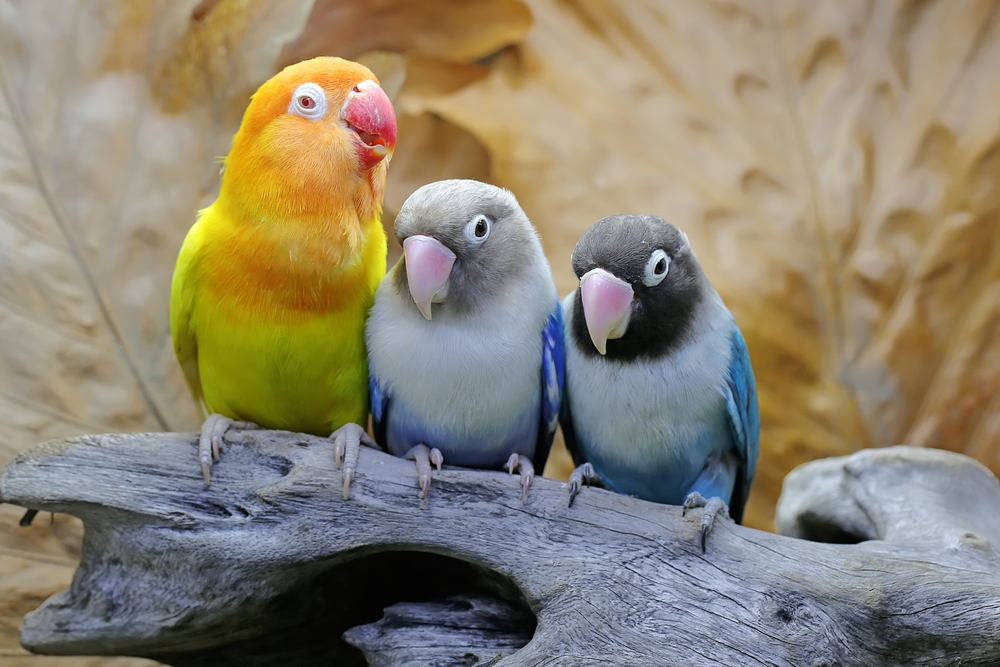
Lovebirds are small, colorful parrots that are commonly kept as pets. They are known for their affectionate behavior towards their owners and monogamous nature. Lovebirds are social animals and prefer living in pairs or groups. In the wild, they build their nests in tree holes or crevices in rocky cliffs.
Lovebirds have a unique appearance with a short, curved beak and a stocky build. They come in various colors, including green, blue, yellow, and peach-faced. While lovebirds are not known to change color drastically, they may experience subtle changes due to genetics, diet, molting, hormonal changes, and environmental factors.
As pets, lovebirds require proper care and attention to thrive. They need a spacious cage, fresh food and water, and regular interaction with their owners. Lovebirds are intelligent animals and can be trained to perform tricks and even mimic human speech.
Lovebird Species and Their Colors
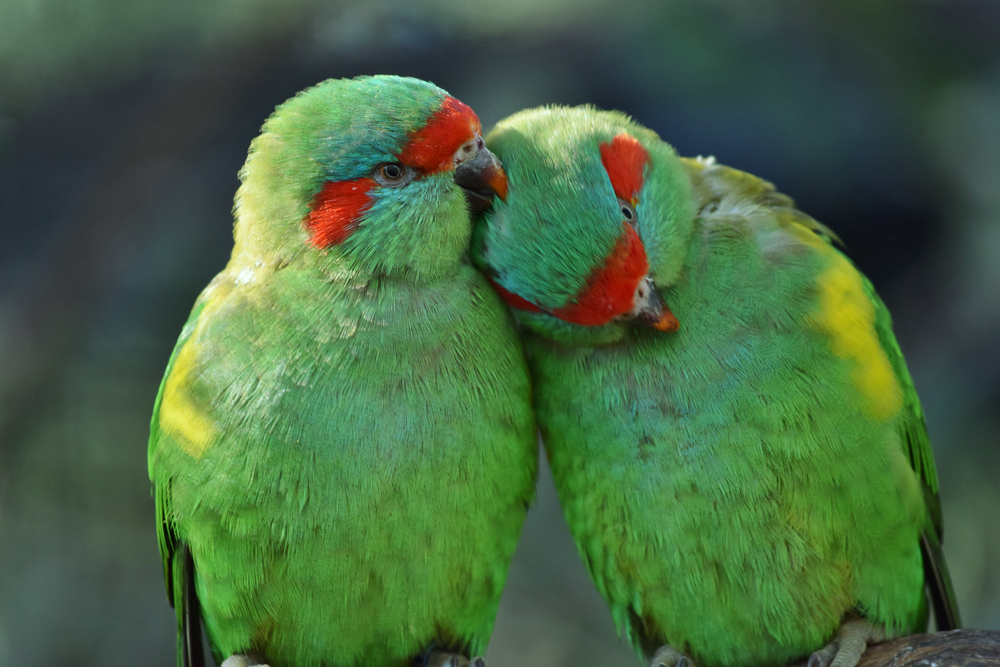
When we talk about lovebirds, we’re referring to nine unique species. These pint-sized parrots originally hail from Africa and Madagascar and boast many beautiful hues. Each species rocks a distinct color pattern from the peach-faced to the masked, from the Fischer’s to the Black-cheeked. But the question is, can these feathered hues change?
Lovebirds come in various vibrant colors that make them a famous pet bird. These colors include red, green, yellow, peach, orange, pink, blue, white, and violet. Some lovebirds even combine these colors on their body and face, making them even more beautiful.
The color of a lovebird’s plumage can vary depending on its age, sex, and species. For example, the Fischer’s lovebird has a deep purple body, while the Peach-faced lovebird has a dark orange face. Lovebirds can also change color during molting, the natural process of shedding old feathers to make way for new ones. During this process, you may notice that the new feathers appear brighter or slightly different in color than the old ones.
Different color mutations in lovebirds result from selective breeding. Some of these mutations include the blue mutation, which means that the body is blue and not their mask, and the albino mutation, which results in a white lovebird with red eyes. Other mutations include mauve, cinnamon, and lutino.
The original colors of the Masked Lovebird are green with a black head, except for several yellow highlights. However, selective breeding has resulted in various lovebird colors, which is great news for pet owners who want a unique and colorful bird.
Can Lovebirds Change Color?
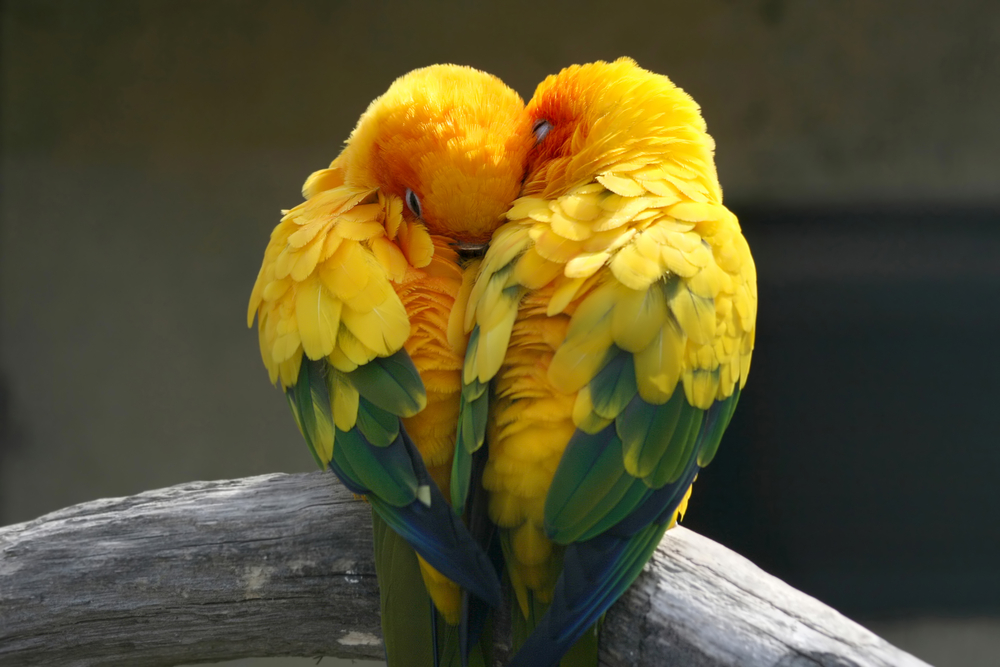
Here’s the deal. Lovebirds’ color can subtly change due to genetics, diet, age, and overall health. For instance, an unhealthy diet might make their colors less vibrant. But don’t expect your peach-faced lovebird to turn into a masked one overnight. That’s just not how it works.
Color Mutations in Lovebirds
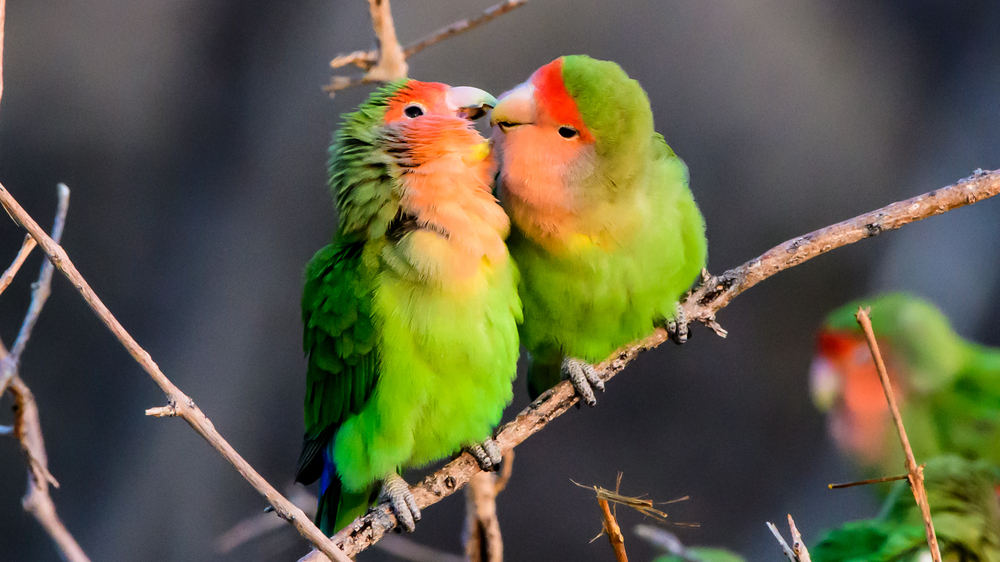
Now let’s talk genetics. In the lovebird world, color mutations are a thing. This is where a lovebird shows a different color from what you’d typically expect from its species. This all comes down to genes, my friends. It’s like when humans have blue eyes instead of the more common brown – it’s not the norm, but it’s not harmful either.
Understanding Color Mutations
If you are a lovebird owner, you may have noticed that lovebirds come in various colors. These colors are the result of color mutations that occur within the species. This section will discuss color mutations, their types, and how they are inherited.
What are Color Mutations?
Color mutations are genetic variations that affect the color of a bird’s feathers. These mutations can occur naturally or can be the result of selective breeding. Selective breeding involves breeding birds with specific traits to produce offspring with those traits.
Types of Color Mutations
There are several types of color mutations in lovebirds. One of the most common mutations is lutino. Lutino lovebirds have yellow feathers and red eyes. This mutation is recessive, meaning both parents must carry the gene to express it in their offspring.
Another common mutation is the pied mutation. Pied lovebirds have a combination of white and another color on their feathers. This mutation is dominant, which means that only one parent needs to carry the gene for it to be expressed in their offspring.
Inheritance of Color Mutations
The inheritance of color mutations in lovebirds follows specific rules. Recessive mutations, such as lutino, require both parents to carry the gene to express it in their offspring. If only one parent carries the gene, the offspring will not express the mutation but will be carriers of the gene.
Dominant mutations, such as pied, only require one parent to carry the gene for it to be expressed in their offspring. If both parents carry the gene for a dominant mutation, the offspring will express the mutation more intensely.
Conclusion
In conclusion, lovebirds can change color due to natural color mutations or selective breeding. These mutations can be inherited in specific ways, resulting in various colors in lovebirds. Understanding color mutations can help lovebird owners better understand their pets’ unique characteristics.
Species of Lovebirds
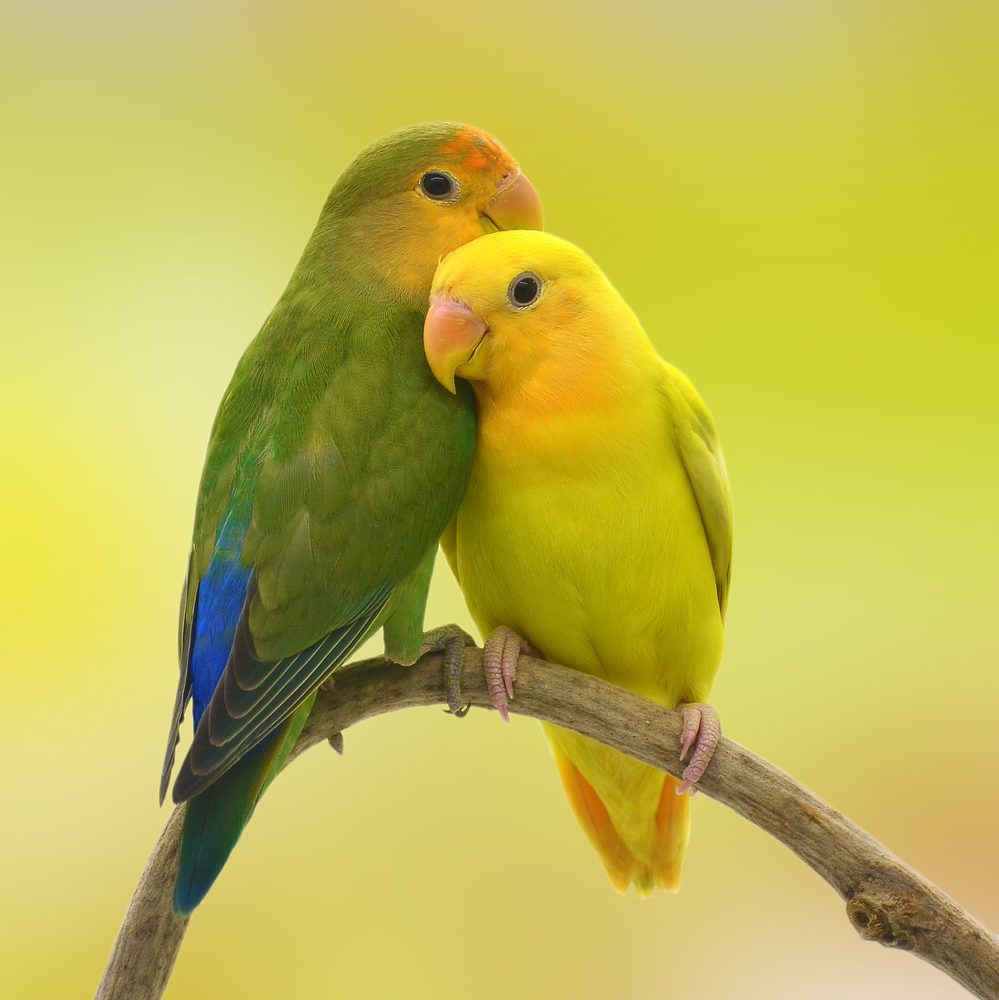
Lovebirds are small, colorful parrots that are native to Africa. There are nine different species of lovebirds, each with its own unique coloration and physical characteristics.
The most common species of lovebirds kept as pets are the Masked Lovebird and the Peach-faced Lovebird. The Masked Lovebird, also known as the Yellow-collared Lovebird, is a small bird with a green body and a black mask around its eyes. On the other hand, the Peach-faced Lovebird has a green body and a peach-colored face.
Other species of lovebirds include the Rosy-faced Lovebird, also known as the Peach-faced Lovebird, the Yellow-collared Lovebird, the Black-cheeked Lovebird, the Black-winged Lovebird, Fischer’s Lovebirds, and the Black-masked Lovebird. Each species has unique coloration and physical characteristics that make it distinct.
Lovebirds are known for their bright, vibrant colors, and many species have been bred to produce even more striking and unusual color combinations. For example, some lovebirds have violet-colored feathers, while others have white or teal feathers.
Overall, lovebirds are a fascinating and beautiful species of bird that make excellent pets for those willing to take the time and effort to care for them properly. Whether you choose a masked lovebird, a peach-faced lovebird, or one of the many other lovebird species, you will surely be delighted by these charming and colorful birds.
Geographical Distribution of Lovebirds
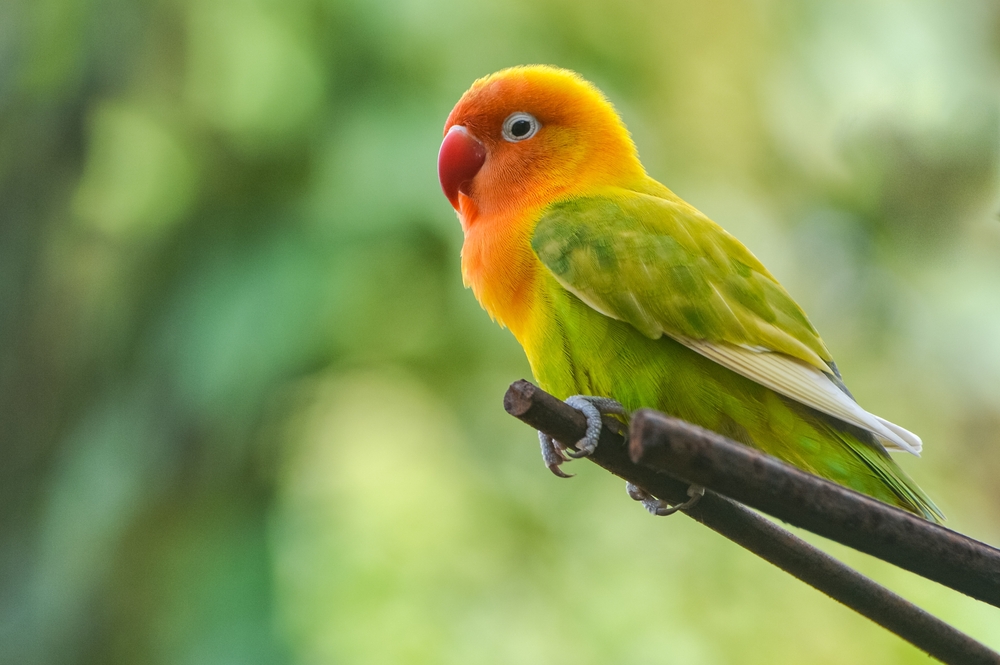
Lovebirds are native to the African continent, found in various habitats, including savannas, forests, and scrublands. They are members of the genus Agapornis, which includes nine different species. The distribution of each species varies, but most are found in sub-Saharan Africa.
One of the most common lovebird species is the Peach-faced Lovebird (Agapornis roseicollis), which is found in many countries, including Zambia, Angola, and Namibia. They are also popular as pets and have been introduced to many other parts of the world.
In addition to their native range, lovebirds have established feral populations in many parts of the world, including the United States, Europe, and Australia. These populations often result from escaped pets or intentional releases, which can negatively impact local ecosystems.
Overall, lovebirds are an essential part of the avian fauna of Africa, and their colorful plumage and engaging personalities make them popular with bird lovers worldwide.
Diet and Color Change
The diet of lovebirds can affect their coloration. Lovebirds feed on various foods in the wild, including seeds, fruits, and insects. The pigments found in their food can influence the color of their feathers.
If lovebirds are not getting enough of certain nutrients, their feathers may become dull or faded. For example, a lack of beta-carotene can cause a loss of vibrant red or orange coloration in their feathers. On the other hand, if lovebirds consume too much of a certain nutrient, it can cause an overabundance of color in their feathers.
In captivity, it is essential to provide lovebirds with a balanced diet that includes a variety of foods. A diet too high in seeds can lead to obesity and health problems. Instead, try offering a mix of seeds, fresh fruits, and vegetables. Some good options include:
- Dark leafy greens, such as kale and spinach
- Carrots and sweet potatoes
- Berries, such as strawberries and blueberries
It is also important to avoid feeding lovebirds foods that are toxic to them, such as avocado and chocolate.
Overall, providing lovebirds with a balanced diet can help to maintain their vibrant coloration. Remember that color changes in lovebirds can also be influenced by factors such as age, season, and molting, so it is normal for their coloration to vary over time.
Breeding and Color Change
Lovebirds are popular pets because of their beautiful colors. If you’re interested in breeding lovebirds, it’s essential to understand how their colors can change.
During the breeding season, lovebirds become more colorful. This is especially true for males, who often develop brighter feathers to attract a mate. However, it’s important to note that not all lovebirds will change color during the breeding season. Some lovebirds will maintain their normal coloration throughout the year.
Selective breeding is another way that lovebirds can change color. By selectively breeding lovebirds with certain color traits, breeders can create new color variations. However, it’s important to note that selective breeding can also lead to health problems in lovebirds if not done carefully.
It’s also important to understand that not all lovebird color changes are natural. Some breeders will artificially change the color of a lovebird’s feathers by using dyes or other chemicals. This is not recommended, as it can harm the bird’s health.
In conclusion, lovebirds can change color during the breeding season and through selective breeding. However, it’s essential to be cautious when attempting to change a lovebird’s color and prioritize its health and well-being.
Seasonal Changes and Color Changes

Love birds are known for their vibrant colors, but can they change color with the seasons? The answer is yes and no. While love birds do not change color with the seasons like some other birds, they do experience seasonal changes that can affect their appearance.
One of the most significant seasonal changes that love birds undergo is molt, which is the process of shedding old feathers and growing new ones. During molt, love birds may appear less colorful or even have bald patches as they replace their feathers. The extent of molt can vary depending on the species and the distance they travel during migration.
Research published in Ecology and Evolution found that birds traveling farther distances tend to replace more feathers, affecting their appearance. This means that love birds that migrate long distances may experience more significant changes in their appearance due to molt than those that stay in one place.
In addition to molt, love birds may also experience changes in their color due to factors such as diet and lighting. For example, a love bird that consumes a diet rich in pigments may have brighter plumage than one that does not. Similarly, the light’s angle and intensity can affect how a lovebird’s feathers appear, making them more or less vibrant.
While love birds do not change color with the seasons like some other birds, they undergo seasonal changes that can affect their appearance. Molt is one of the most significant seasonal changes that love birds experience, and it can change their color and overall appearance.
Physical Features Influencing Color
Lovebirds are known for their vibrant and colorful plumage. But have you ever wondered what physical features contribute to their stunning colors? In this section, we will explore the different physical features of lovebirds that influence their color.
Feathers
Feathers are the most obvious physical feature that affects the color of lovebirds. The color of their feathers is determined by the pigments present in them. Lovebirds have a range of feather colors, from green to blue, yellow, and orange. The color of their feathers can also be affected by mutations resulting in several lovebird colors.
Beak
The beak of a lovebird is made of keratin, the same material that makes up our hair and nails. The beak color can vary depending on the species of lovebird. For instance, the peach-faced lovebird has a bright orange beak, while the black-headed lovebird has a black beak.
White Rings
Some lovebirds have white rings around their eyes, while others have white circles around their necks, known as a gorget. These white rings and circles are not pigments but are created by light’s refraction.
Markings
Lovebirds can have different markings on their plumage, such as spots and stripes. These markings can be used to identify different species of lovebirds. For example, the peach-faced lovebird has a distinctive peach-colored face, while the black-headed lovebird has a black head with a white ring around its neck.
Tail
The tail of a lovebird can also affect its color. For instance, the house sparrow and northern cardinal have different colored tails that help to distinguish them from other birds.
In conclusion, lovebirds’ physical features play a significant role in determining their color. From their feathers to their beaks and markings, each physical feature contributes to the overall beauty of these birds.
For More bird Info : https://www.audubon.org/
Tags #old lovebird
Tags #love birds mutation guide
Tags #love bird color pantone
Tags #baby lovebird growth stages
Tags #love birds colors images
My lovebird’s color seems to be fading. What can I do?
Check your lovebird’s diet. Lack of certain nutrients could lead to color fading. Make sure you’re providing a balanced diet, and consider consulting a vet.
Can lovebirds change color when they’re stressed or sick?
Stress or illness can potentially affect a lovebird’s color. Seeing a vet is crucial if you suspect your bird is stressed or unwell.
I’ve heard sunlight can change a lovebird’s color. Is this true?
Sunlight can help to bring out the vibrancy in a lovebird’s feathers, but it doesn’t cause a color change.
Can love birds change color to green?
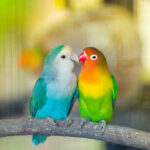
Yes, lovebirds can change color to green. Lovebirds are known for their vibrant and colorful feathers, and their colors can change as they mature. Some lovebirds may start with yellow feathers and develop green feathers as they age.
Can love birds change color to blue?
Yes, lovebirds can change color to blue. Lovebirds come in various colors, including blue, and their colors can change as they age. Some lovebirds may start with green feathers and develop blue feathers as they age.
Why do lovebirds change color?
Lovebirds change color as they age due to a process called molting. Molting is the process of shedding old feathers and growing new ones. As lovebirds molt, their feathers may change color and develop new colors they did not have before.
Do lovebirds Change Colour?
Yes, lovebirds can change color. Lovebirds are known for their vibrant and colorful feathers, and their colors can change as they mature. Some lovebirds may start with yellow feathers and develop green feathers as they age.
What is the rarest lovebird color?
The rarest lovebird color is the black-cheeked lovebird. This lovebird has a black head, white eye-ring, and green body. Black-cheeked lovebirds are native to Zambia and are considered endangered.
What Colour mutations do love birds have?
Lovebirds have a variety of color mutations, including lutino, albino, pied, cinnamon, and violet. These mutations can result in lovebirds with unique and beautiful color combinations that are highly sought after by bird enthusiasts.